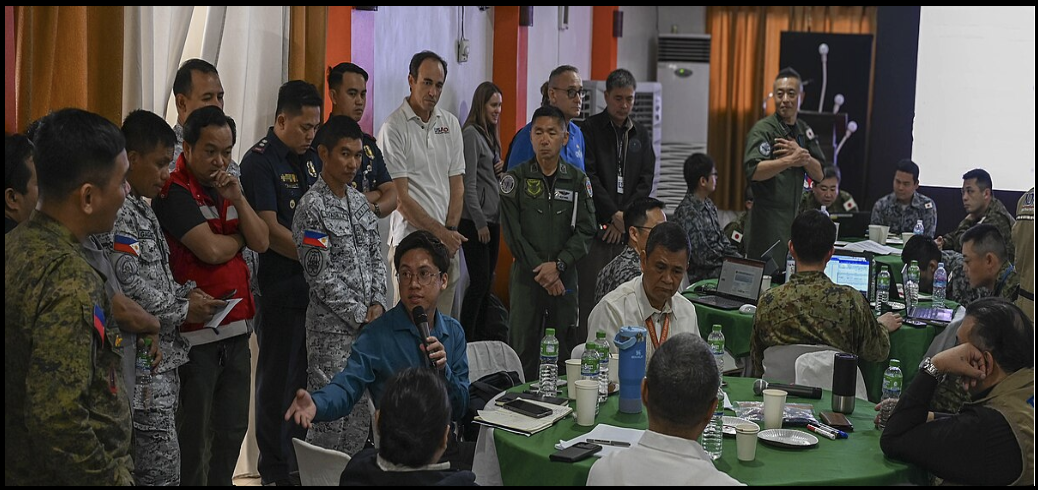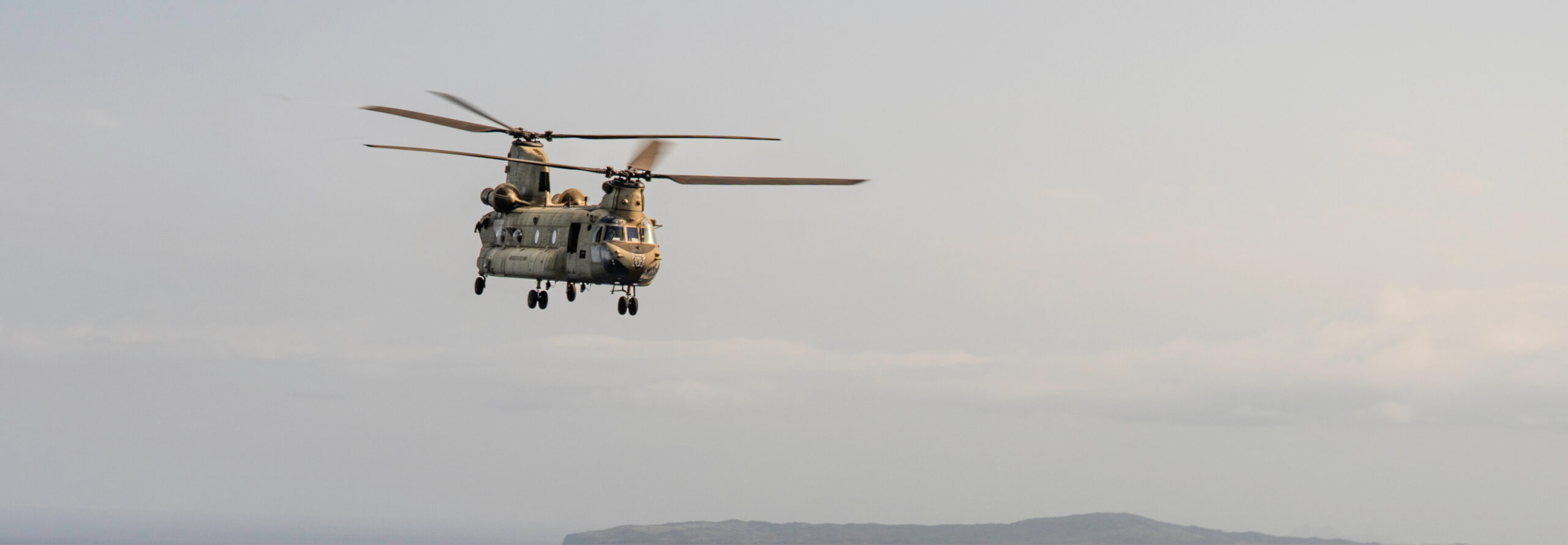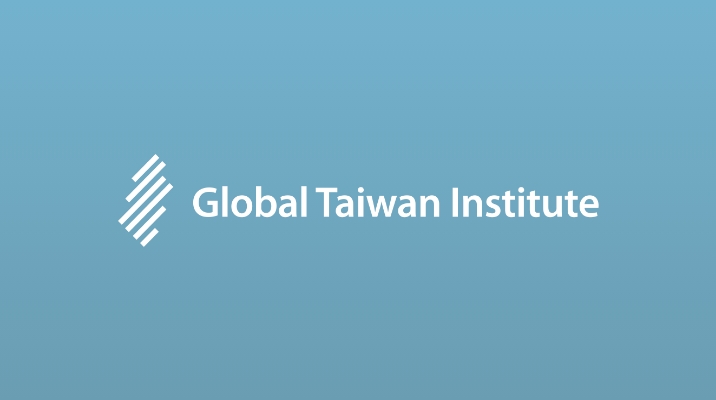As cross-Strait tensions become more complex, a budding trilateral security partnership between the United States, Japan, and the Philippines has emerged. Since the April 2024 US-Japan-Philippines trilateral summit, these three partners have deepened defense cooperation through joint Indo-Pacific exercises. For instance, this past May, the trilateral partners successfully conducted the first-ever humanitarian assistance and disaster response (HADR) table-top exercise during the Philippines’ annual exercises, Balikatan. Moreover, they established a Multinational Coordination Center (MNCC) in response to a simulated typhoon hitting northern Philippines, which required multilateral cooperation to streamline operations, logistics, and planning. This achievement not only showcases the capability of trilateral coordination in HADR operations but could also serve as a framework to support a multinational noncombatant evacuation operation (NEO) of Taiwan.
The Emergence of US-Japan-Philippines Trilateral Cooperation
Until now, no public commitments by the partners have been made regarding a multinational force (MNF) NEO strategy for Taiwan. However, there has been strategic alignment regarding the grave importance of Taiwan’s security. Japan has ramped up its efforts to prepare for evacuation scenarios off its Sakishima islands in the Okinawa prefecture. Additionally, after Japan’s 2022 National Defense Strategy identified the Taiwan Strait as a direct security concern and reaffirmed Japan’s commitment to international cooperation on global challenges, peripheral islands like Yonaguni are now being militarized as part of a territorial defense strategy. Overall, Japan is placing greater emphasis on crisis response and deterrence, with evacuation frameworks reportedly under development.
Similarly, Representatives of the Philippines’ Armed Forces have publicly stated that they are prepared to evacuate Filipinos from Taiwan in the event of war with China. With the Bashi Channel only separating northern Luzon from Taiwan’s southern city of Kaohsiung by about 190 nautical miles, Manila has established a Coast Guard station on the island of Itbayat and has increased military exercises with partners throughout the region, including quadrilateral cooperation during humanitarian civic assistance activities and multilateral maritime cooperative activities with the United States, Japan, and Australia. These efforts display a deepening of regional security ties and ongoing efforts of force preparation and mobilization for the Philippines.
The United States, however, would likely be the lead nation in any MNF NEO strategy during a Taiwan contingency, given its long-standing security treaties with both Japan and the Philippines. As the Department of the Army’s Multinational Operations Doctrine states, a lead nation can streamline command and control (C2) by integrating liaison and staff augmentation from coalition partners to fill capability gaps and ensure unity of effort. In Taiwan’s case, if the trilateral partners all consent to launch an MNF NEO, the United States is the best candidate for the role, as its military footprint spans Japan, the Philippines, and the entire Indo-Pacific. Furthermore, the United States already conducts regional MNF NEO training during Thailand’s Operation Cobra Gold and simulates a NEO from South Korea to Japan during its Ulchi Freedom Shield exercise. As the United States is deeply integrated into the region through bilateral alliances, it is best positioned to initiate, synchronize, and lead trilateral NEO planning.
With trilateral HADR efforts already underway and the implementation of ratified agreements such as the US-Philippines Enhanced Defense Cooperation Agreement (EDCA) and the Japan-Philippines Reciprocal Access Agreement, the US-Japan-Philippines trilateral partnership now presents ideal conditions for deeper integration by establishing the necessary legal frameworks. Given the logistical similarities and institutional overlap between HADR and NEO, existing trilateral HADR frameworks offer a practical foundation for developing a credible MNF NEO strategy. By institutionalizing inter-agency communication frameworks, expanding trilateral infrastructure access, and leveraging Track-2 mechanisms to engage Taiwan’s whole-of-society resilience networks, the partners can effectively rehearse a credible MNF NEO strategy for a Taiwan contingency scenario. Although this evolution would require further policy formalization and sustained diplomatic backing from all sides, existing cooperation between the three countries provides a foundation for what a possible MNF NEO strategy could look like.
Prior US–Allied Emergency Response Cooperation in the Indo-Pacific
Throughout history, the United States has been a staunch supporter of both the Philippines and Japan during crises, effectively and rapidly mobilizing forward-deployed military units to help local authorities. During Operation TOMODACHI, in response to Japan’s 2011 Tōhoku earthquake and tsunami, the US-Japan alliance established a joint task force integrating naval, air, and logistical assets under a unified command-and-control (C2) network that streamlined communication and relief operations. US forces quickly mobilized across Japan, delivering daily necessities and medical aid, clearing debris from critical infrastructures, and jointly participating in efforts with the Japanese in evacuating displaced Japanese locals.
The United States has also demonstrated a similar rapid resolve for the Philippines. Earlier this year, US Forces participating in Resolute Force Pacific 2025 were diverted from exercise efforts in Misawa, Japan, to conduct real-world disaster response operations at the northern tip of Luzon, the main island of the Philippines. As part of the US response, the 353rd Special Operations Wing rapidly deployed CV-22 Ospreys, medical personnel, security forces, and special tactics teams within hours, transporting food packs to flooded local communities.
Overall, Operation TOMODACHI and this year’s Resolute Force Pacific are examples of credibility in the United States’ commitment to the security of Japan and the Philippines. Beyond demonstrating the positive results of bilateral alliance coordination during these natural disasters, these events underscore that the Philippines and Japan value US military support beyond traditional force projection and commitment signaling. Furthermore, as these three partners continue to align strategically, they can build off of the tangible results achieved through military HADR efforts to prepare a trilateral NEO strategy for a Taiwan contingency.
Challenges of NEO in Taiwan
Despite the strategic alignment of Taiwan and its importance for their own national security, the nascent trilateral US, Japan, and the Philippines relationship has remained ambiguous on their response to a contingency scenario. Although NEO planning has remained abstract, China’s escalating pressure keeps potential NEO scenarios relevant. Last year’s CSIS ChinaPower report examined potential Chinese blockade methodologies, highlighting that China could incorporate politically calculated kinetic pauses in offensive operations that would facilitate NEOs in Taiwan within pre-determined time constraints. However, this option is not pre-determined or conclusive, and planners for NEO strategies can not expect its implementation with absolute certainty. Furthermore, given the geographical limitations of the theater, US forces must establish mechanisms for rapid response. In his article “States of Denial: Sensibly Defending Taiwan,” Matthew F. Cancian notes that US operations heavily depend on the permissions of Japan, the Philippines, and other nations, and formal allies may even hesitate to authorize preemptive action. Political delays that inhibit force mobilization will restrict operations within Taiwan’s archipelago. [1] Therefore, if the United States decides to be the lead nation in an MNF NEO, it will have to address bureaucratic and geopolitical limitations that impair its operational capabilities surrounding Taiwan.

Image: Armed Forces of the Philippines, Japan Self-Defense Forces service members, and US government officials work in groups during a Humanitarian Assistance and Disaster Relief Tabletop Exercise in support of Exercise Balikatan 25 at Camp Aguinaldo (Image source: United States Army)
Policy Recommendations for Trilateral NEO coordination:
From now on, the partners must seek to institutionalize trilateral HADR operations and incorporate MNF NEO training within their existing military exercises. By implementing NEO requirements in trilateral training outlined in US doctrine, such as evacuee processing concepts, control center operations, and the use of systems such as the Non-Combatant Evacuation Operations Tracking System (NTS), the partners can standardize communication protocols and rehearse operations under an integrated C2 network that streamlines decision-making from top to bottom. This will enable trilateral military representatives to coordinate effectively with civilian authorities and ensure that delegated responsibilities are conducted by the appropriate agencies, limiting bottlenecks in the execution of orders.
Secondly, the partners must maximize their expanded access in the region neighboring Taiwan and pre-position humanitarian and evacuation infrastructure across Northern Luzon’s EDCA bases and Japan’s Self-Defense Force’s (JSDF) bases in the Sakishima Islands. Given that US forces can continue to access these bases during temporary operations, Japan and the Philippines must parallel these deployments. Earlier this month, Japan and the Philippines held their first bilateral exercise, Doshin-Bayanihan 5-25, under their recently implemented RAA. This exercise displayed deployments of both Japanese and Philippines C-130 aircraft for HADR efforts in Cebu, Philippines. Although this was a monumental step displaying the progress of Japan and the Philippines bilateral cooperation, these operations need to be exercised closer to Taiwan in Northern Luzon and on the Sakishima Islands. Since these bases offer convenient access to the Bashi Channel and Taiwan’s eastern coast, their potential usage during an MNF NEO would be multi-dimensional—serving as vital refueling and staging areas for tactical airlift and rotary wing assets. The United States, Japan, and the Philippines must cooperate to make sure that reciprocal access is guaranteed to these sites, so that they gain more operational flexibility for the deployment of forces and repatriation of evacuees.
Finally, the US–Japan–Philippines authorities must consider implementing Track-2 mechanisms to engage Taiwan’s whole-of-society resilience networks—specifically local emergency-management institutions, civil-society organizations, and NGOs—to enhance MNF NEO preparedness on the island. In July, grassroots volunteer groups in Taiwan—dubbed the “shovel superheroes” (鏟子超人)—rapidly mobilized to Hualien to support earthquake relief efforts. State-linked enterprises, such as the Taiwan Railway Corporation, collaborated with civic groups to expand ground support, demonstrating Taiwan’s robust public–private cooperation during crises. This same sense of unity and resilience has been institutionalized in Taiwan’s annual Han Kuang (漢光演習) exercises, through Urban Resilience drills, which this year coordinated mass-evacuation rehearsals, urban-warfare simulations, and civilian emergency-response training. By leveraging Taiwan’s Global Cooperation and Training Framework (GCTF), which facilitates collaboration between Taiwan, the United States, Japan, and other regional partners, Taipei can strengthen coordination mechanisms for humanitarian and disaster response. Integrating NEO planning into the GCTF’s existing HADR-focused framework would further enhance regional preparedness and interoperability. Expanding the GCTF in this way would further operationalize Taiwan’s All-Out Defense Mobilization framework. Such collaboration would not only improve the partnership’s interoperability but also reduce operational friction during a Taiwan contingency.
Conclusion
The emergence of the US–Japan–Philippines Trilateral Security partnership provides a strong institutional foundation for developing a coordinated MNF NEO strategy in the event of a Taiwan contingency. With the threat of a Chinese maneuver to capture Taiwan contingency continuing to evolve, the trilateral partnership can fill the tactical gaps where states unilaterally cannot. With expanding legal frameworks that facilitate deeper military engagement, HADR operations should serve a dual purpose—advancing preparedness for NEOs. By expanding base accessibility and fostering Track-2 dialogue with Taiwan, the partners can signal a sustained humanitarian commitment that bolsters Taiwan’s resilience and enhances regional stability.
The main point: The emergence of a US–Japan–Philippines trilateral security partnership offers a strong foundation to transform humanitarian assistance and disaster relief (HADR) cooperation into a multinational force noncombatant evacuation operation (MNF NEO) framework for a Taiwan contingency. By institutionalizing HADR-based coordination, expanding reciprocal base access in Northern Luzon and the Sakishima Islands for all three partners, and leveraging Track-2 mechanisms such as Taiwan’s Global Cooperation and Training Framework (GCTF), the partners can operationalize a credible NEO strategy for the region. Strengthening this trilateral strategic alignment would not only enhance preparedness for a Taiwan contingency but also reinforce collective humanitarian resilience across the Indo-Pacific.
[1] Matthew F. Cancian, “States of Denial: Sensibly Defending Taiwan,” Survival 67, no. 2 (2025): 133–58, https://doi.org/10.1080/00396338.2025.2481778





